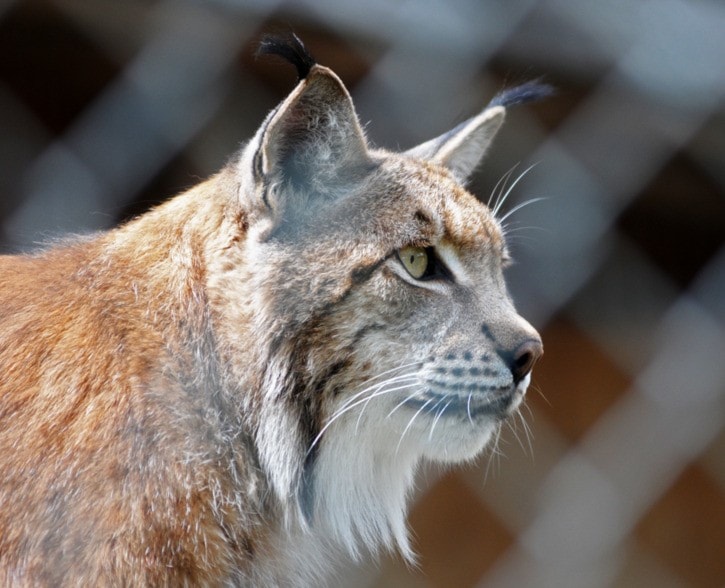The Northern Lights Wildlife Shelter held their second annual open house on July 3, offering Bulkley Valley residents a rare chance to see what goes on at the Telkwa High Road rehabilitation centre.
The shelter, started in 1990 by Angelika and Peter Langen, now sees between 30 and 50 animals a year. Visitors to the open house saw a pair of baby beavers, a cougar and lynx (both permanent residents), a baby coyote, three moose, a baby deer and several young black bears. Despite the variety of animals seen at Northern Lights, they are most well known for their work with bears. In the last few months, they’ve released four grizzlies and two black bears back into their home habitats.
When the Langens first started their shelter, it was not immediately welcomed by provincial officials.
“We had to fight for years to get the permits,” said Angelika. When they were finally allowed to start rehabilitation work, permits were issued on a single animal basis; they now work on year-long permits for the facility overall.
Due to the setup of their property, the animals are able to be isolated not only from each other, but from any direct contact with humans, other than the handlers and small group of volunteers that help care for them. That isolation has translated into a high success rate.
“Because of our location bears have become a bit of a focus, although not intentionally,” said Angelika. “It seems to be working well with the ones we’re releasing.”
The Langens decided last year to offer an open house for the first time, to show people what’s involved in wildlife rehabilitation.
“It’s a good way of letting people into what we’re doing,” she said.
She also explained why offers of help are sometimes turned down. The handful of volunteers currently working with the animals have all made serious time commitments to Northern Lights, staying for months or even years at a time, sometimes travelling from other parts of the world specifically for the experience in wildlife rehabilitation. It’s all part of the Langens’ efforts to keep human contact with the animals to a minimum.
“The animals can’t be exposed to changing people,” said Angelika. “It makes it hard to work in the local people who want to help out.”
The open house also gave the Langens the chance to dispel myths and rumours Bulkley Valley residents may have heard about the shelter. Angelika said she’s heard people claim the shelter is responsible for the increased number of bears in the valley, despite the fact that the animals they help nurse to health are always released back to the area of the province they came from. The last pair of black bears were released near Penticton, while the grizzlies were flown to their home turf near Bella Coola.
The open house also shows local donors where their money has gone, with extensive work done setting up appropriate habitats for the hosted animals. All of Northern Lights’ expenses are paid for with donations, but many people don’t realize just how quickly costs can add up when transporting animals from Smithers back to their homes in other areas of B.C. For example, the helicopter costs were in the thousands of dollars when the four grizzlies were taken back to Bella Coola last month, said Angelika.
“We’ve spent close to $20,000 this year just getting the bears out there, and that’s not counting the grizzlies,” she said. “Our success is because of our location. The problem is our location.”
